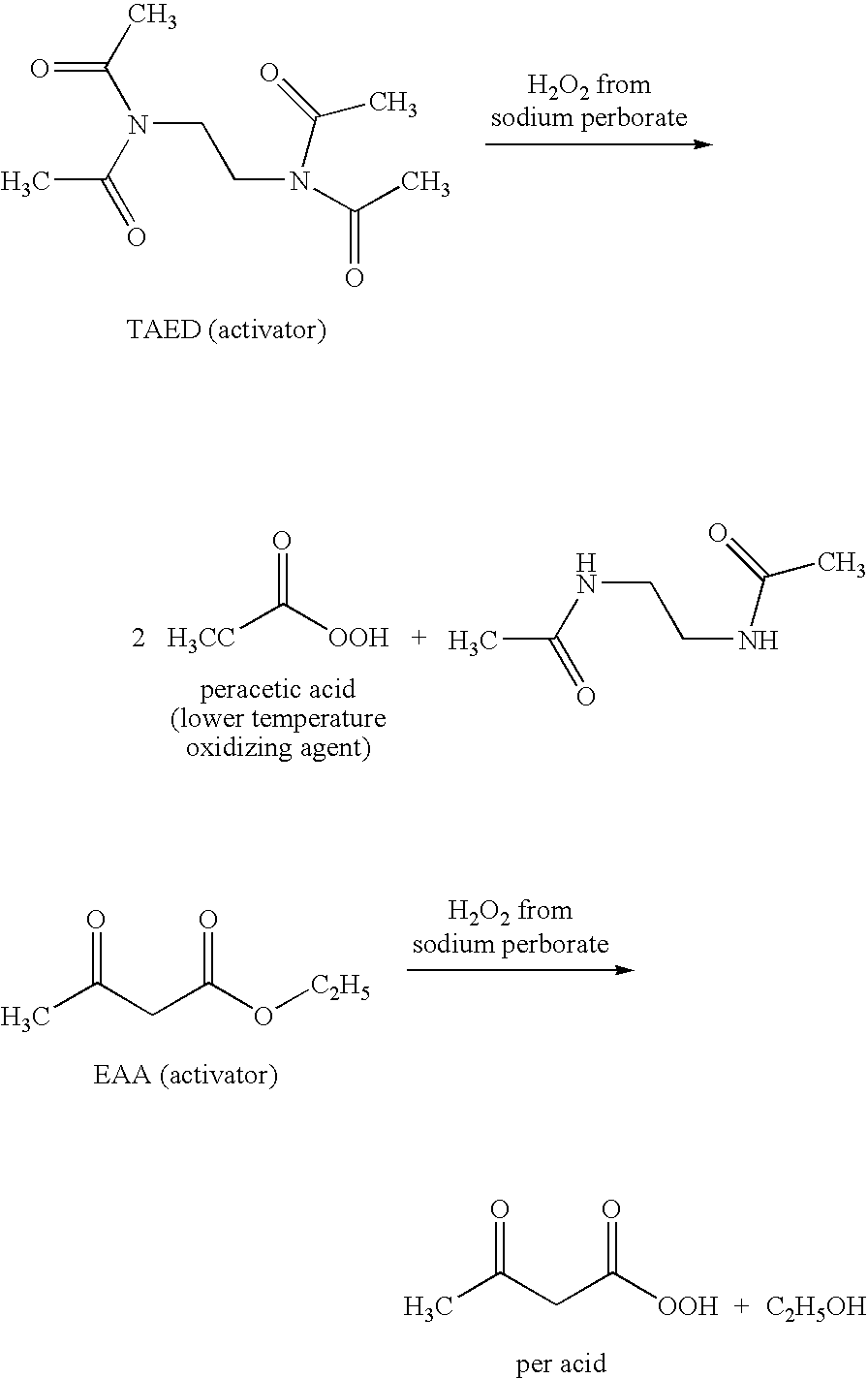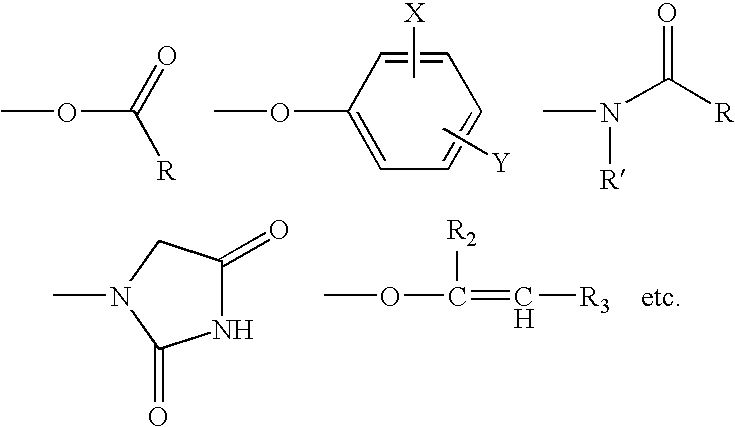Compositions and methods for breaking a viscosity increasing polymer at very low temperature used in downhole well applications
a technology of viscosity increasing polymer and low temperature, which is applied in the direction of fluid removal, wellbore/well accessories, chemistry apparatus and processes, etc., can solve the problems of fractures that are subjected to hydraulic treatment, subterranean formations that are literally cracked apart or fractured under strain, and fractures that tend to be squeezed closed
- Summary
- Abstract
- Description
- Claims
- Application Information
AI Technical Summary
Benefits of technology
Problems solved by technology
Method used
Image
Examples
example 1
[0119]Breaking at 95° F. (35° C.) a 42 lb / Mgal (5 g / L) xanthan gum polymer in 3% KCl water containing 7.8 lb / Mgal (0.94 g / L) citric acid using 100 lb / Mgal (12 g / L) sodium perborate and 10 gal / Mgal (10 ml / L) ethyl acetoacetate.
[0120]The reported specific gravity of ethyl acetoacetate is 1.029 and the reported density of ethyl acetoacetate is 8.57 lb / gal.
[0121]The procedure was as follows: Add 1 L water to a Waring blender jar; add 30 g KCl (3% by weight of water); add 0.94 g / L (7.8 lb / Mgal) citric acid; add 5.04 g / L (42 lb / Mgal) xanthan gum polymer; allow the gel to hydrate for 30 minutes to 1 hour; measure the pH and viscosity of the gel at the start; add 12 g / L (100 lb / Mgal) sodium perborate and 10 ml / L (10 gal / Mgal) ethyl acetoacetate; after adding the sodium perborate and ethyl acetoacetate, place the test sample in a temperature bath to be maintained at 95° F. (35° C.); measure the pH and viscosity every hour after the start and one to two more times over a period of time.
[0122]...
example 2
[0123]Breaking at 95° F. (35° C.) a 60 lb / Mgal xanthan gum polymer in 3% KCl water containing 7.8 lb / Mgal citric acid using 175 lb / Mgal (21 g / L) sodium perborate, varied concentrations of ethyl acetoacetate, and 229 lb / Mgal (27.5 g / L) potassium phosphate.
[0124]The procedure was as follows: Add 1 L water to a Waring blender jar; add 30 g KCl (3% by weight of water); add 0.94 g / L (7.8 lb / Mgal) citric acid; add 7.2 g / L (60 lb / Mgal) xanthan gum polymer; allow the gel to hydrate for 30 minutes to 1 hour; measure the pH and viscosity of the gel at the start; add 12 g / L (100 lb / Mgal) sodium perborate and the varied amount of ethyl acetoacetate at 10 ml / L (10 gal / Mgal), at 12.5 ml / L (12.5 gal / Mgal), at 15 ml / L (15 gal / Mgal), or at 17.5 ml / L (17.5 gal / Mgal); after adding the sodium perborate and ethyl acetoacetate, place the test sample in a temperature bath to be maintained at 95° F. (35° C.); add approximately 27.5 g / L (229 lb / Mgal) potassium phosphate to buffer the pH from about 9 down to...
example 3
[0126]Breaking at 95° F. (35° C.) a 60 lb / Mgal xanthan gum polymer in 3% KCl water containing 7.8 lb / Mgal citric acid using 175 lb / Mgal (21 g / L) sodium perborate, 10 gal / Mgal (10 ml / L) ethyl acetoacetate, and varied concentrations of potassium phosphate. The procedure for Example 3 was similar to that used in Example 2.
TABLE 3aBreak Data for Example 3 with 50 lb / Mgal Potassium PhosphateTime (hours)Dial ReadingViscosity (cP)pH0 214.542.93.9After breaker8.4 3.2517.53.57.55 142.87.420.5 91.87.2
TABLE 3bBreak Data for Example 3 with 100 lb / Mgal Potassium PhosphateTime (hours)Dial ReadingViscosity (cP)pH0214.542.93.9After breaker7.8 3.2516.53.37.1510.52.16.9 20.571.46.8
TABLE 3cBreak Data for Example 3 with 200 lb / Mgal Potassium PhosphateTime (hours)Dial ReadingViscosity (cP)pH0214.542.953.9After breaker6.9 3.252046.6510.52.16.5 20.561.26.4
TABLE 3dBreak Data for Example 3 with 225 lb / Mgal Potassium PhosphateTime (hours)Dial ReadingViscosity (cP)pH0214.542.93.9After breaker6.8 3.25265....
PUM
| Property | Measurement | Unit |
|---|---|---|
| static temperature | aaaaa | aaaaa |
| diameter | aaaaa | aaaaa |
| break time | aaaaa | aaaaa |
Abstract
Description
Claims
Application Information
 Login to View More
Login to View More - R&D
- Intellectual Property
- Life Sciences
- Materials
- Tech Scout
- Unparalleled Data Quality
- Higher Quality Content
- 60% Fewer Hallucinations
Browse by: Latest US Patents, China's latest patents, Technical Efficacy Thesaurus, Application Domain, Technology Topic, Popular Technical Reports.
© 2025 PatSnap. All rights reserved.Legal|Privacy policy|Modern Slavery Act Transparency Statement|Sitemap|About US| Contact US: help@patsnap.com



